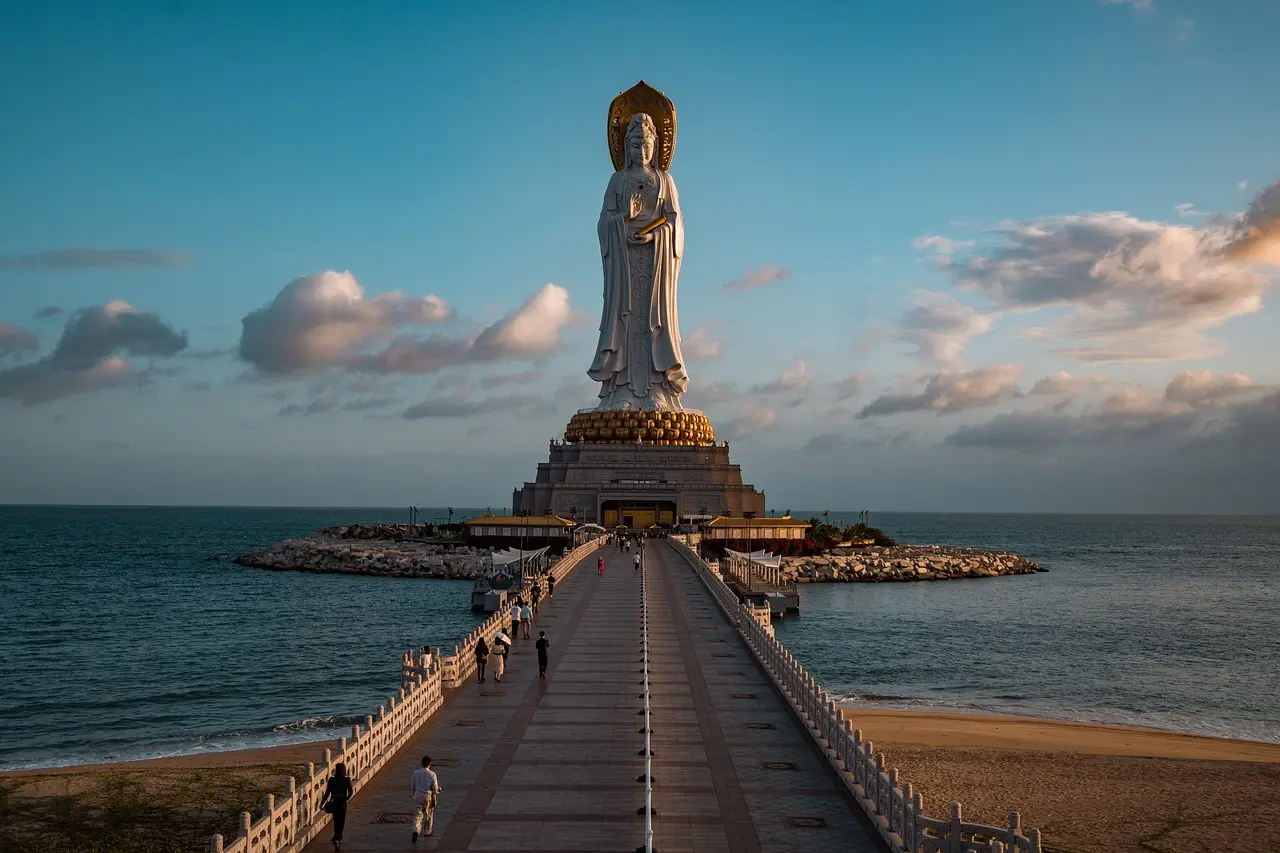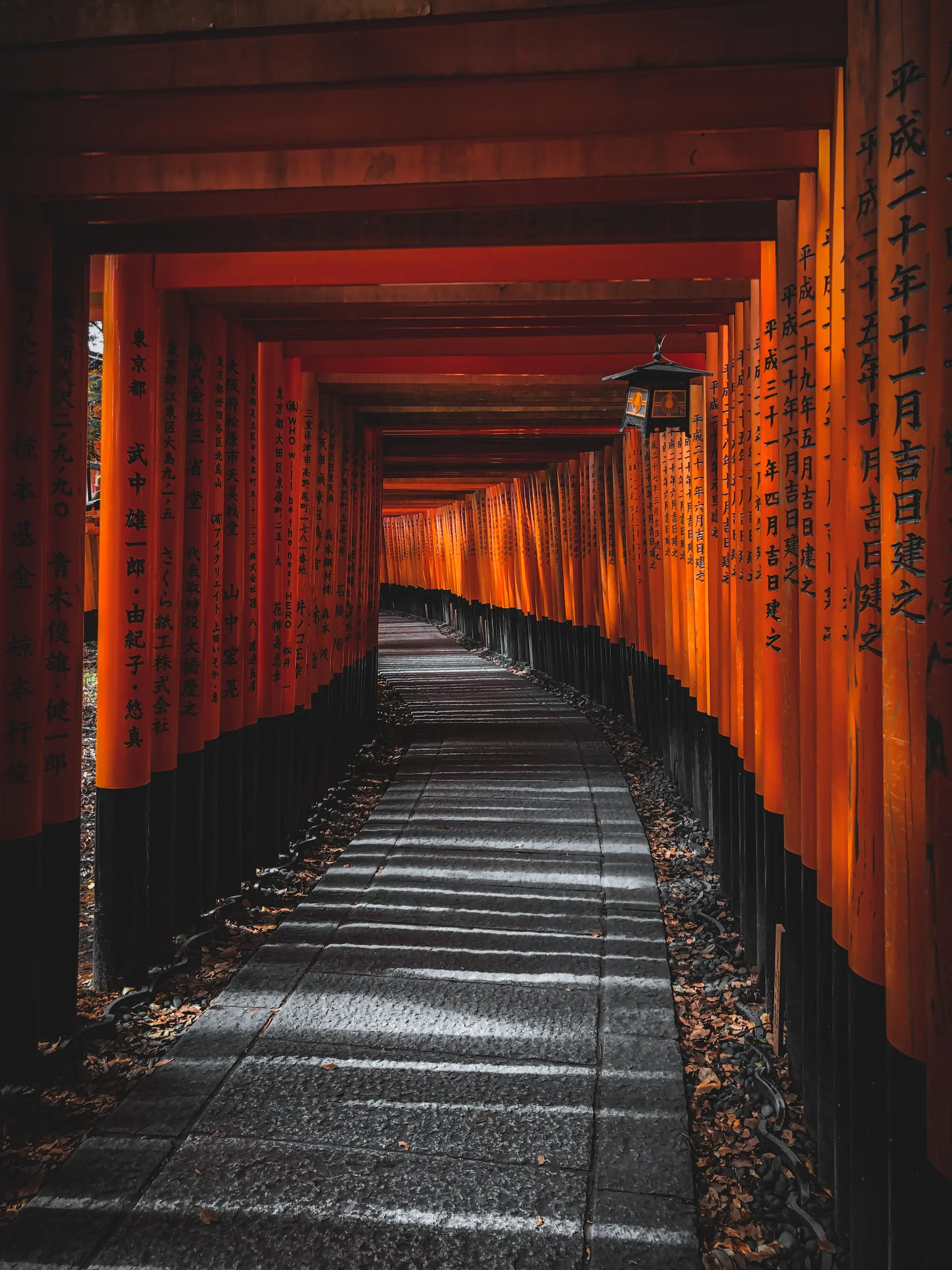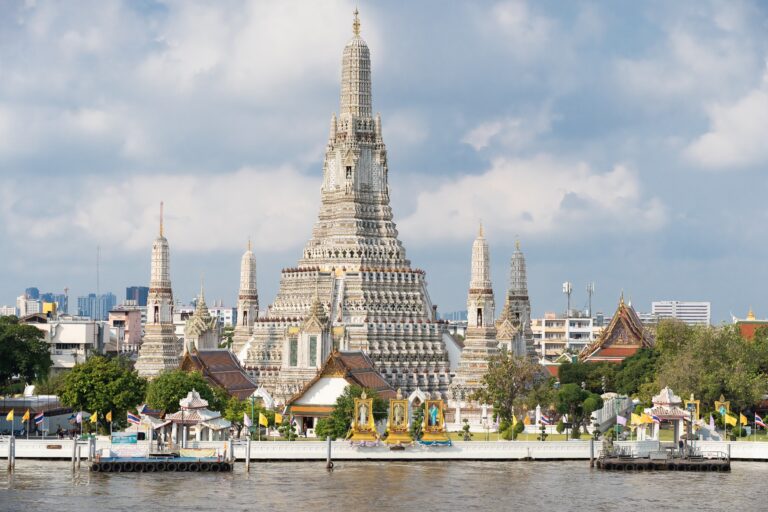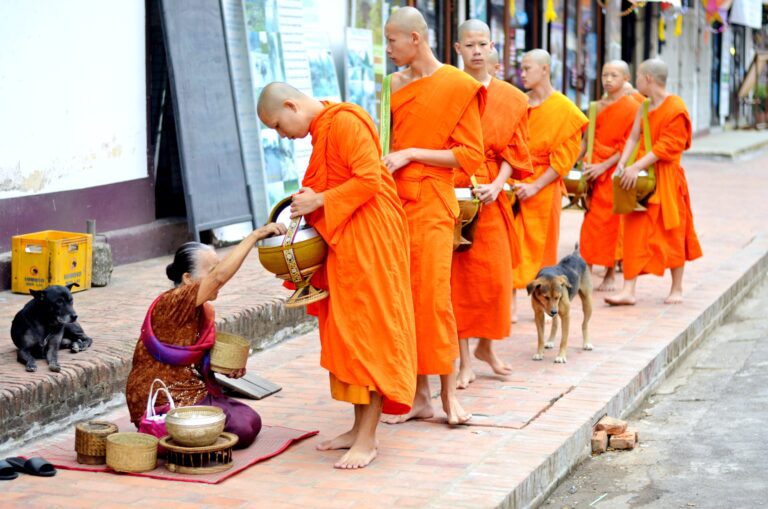Trees have long stood as powerful symbols across human cultures and spirituality.
Across the globe, from the dense rainforests of the Amazon to the arid landscapes of the Middle East, various cultures have revered trees not just for their life-sustaining capabilities but for their profound spiritual significance.
Sacred trees serve as living connections between the heavens and the Earth, embodying the cycle of life, death, and rebirth. They are venerated as the abodes of gods, spirits, and ancestors, playing central roles in myths, rituals, and ceremonies that span the breadth of human history.
And why not? After all, trees are cornerstones of ecosystems around the world, playing critical roles in maintaining biodiversity, stabilizing climates, and supporting the complex web of life. They clean our air, filter our water, and offer refuge to countless species of flora and fauna.
In this article we’ll uncover not only the diversity of species that have captured the human imagination but also the universal themes that unite us in our reverence for the natural world. Through understanding the significance of these sacred trees, we gain insight into the shared heritage of humanity and the imperative to protect these magnificent beings in an age of environmental uncertainty.
Table of Contents
Toggle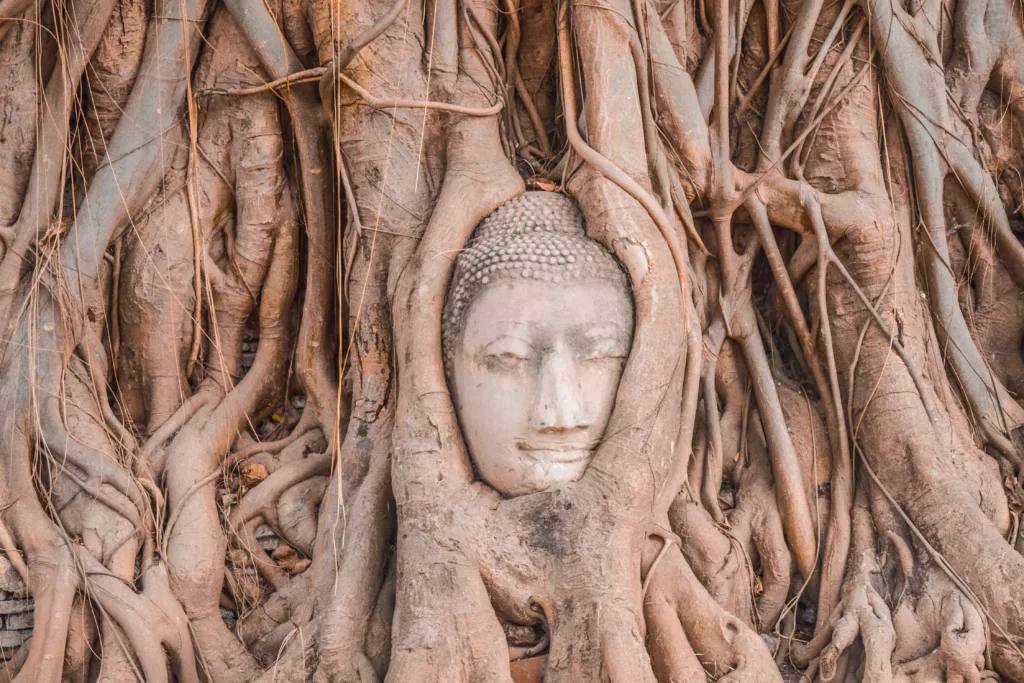
Why are some Trees Considered Sacred?
The veneration of trees as sacred entities stretches back to the dawn of human civilization, intertwining with the fabric of religious and cultural expressions across the world. This profound reverence is found in the traditions and myths of diverse communities, each attributing sacred qualities to various species of trees.
The historical roots of tree worship are deeply connected to our ancestors’ reliance on trees for essential life-sustaining resources such as food, shelter, and medicine. This practical dependence gradually evolved into spiritual significance, with trees symbolizing life, fertility, and immortality.
Trees also played pivotal roles in ancient rituals, embodying various symbolic meanings. They were used in ceremonies to mark the changing seasons, celebrate harvests, and honor the cycles of life and death.
The significance of trees in human culture reflects a universal recognition of their vital role in sustaining life on Earth. Beyond their ecological importance, trees are imbued with profound cultural and spiritual meanings, serving as reminders of our deep connection to the natural world and the life that it sustains.
Sacred Trees Around the World
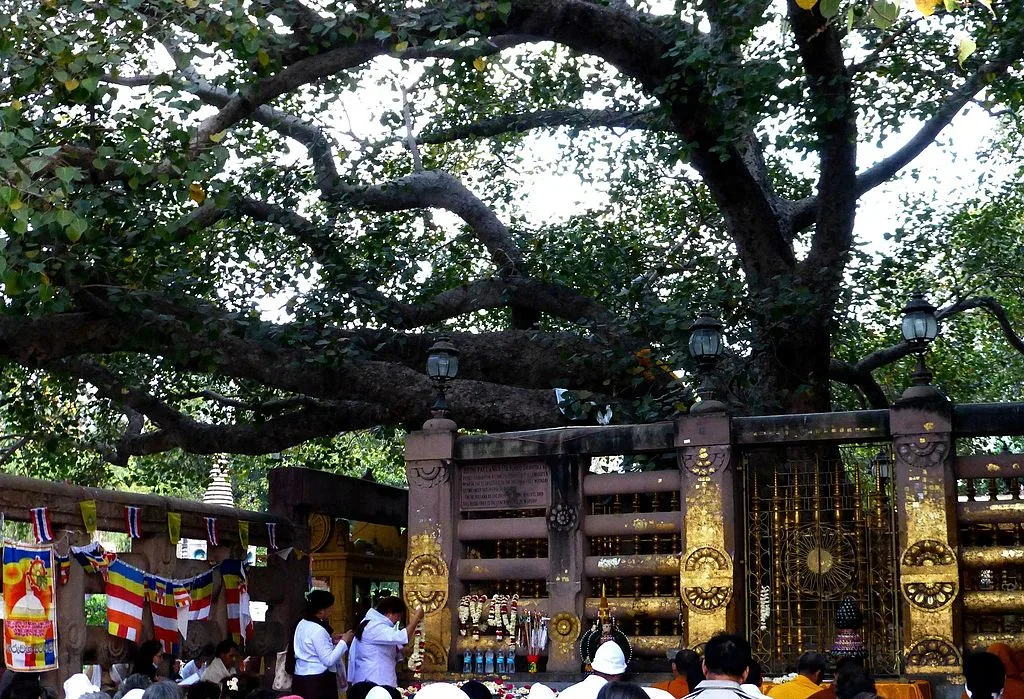
1. Bodhi Tree
The Bodhi Tree is deeply revered in Buddhism as the tree under which Siddhartha Gautama, the Buddha, attained enlightenment. This is why Buddhist mala prayer beads are made out of Bodhi seeds.
This event, occurring in Bodh Gaya, India, marks a pivotal moment in religious history, imbuing the tree with a sacredness that transcends its physical form. The Bodhi Tree symbolizes enlightenment, wisdom, and the quest for understanding that lies at the heart of Buddhist teachings. It is not just a species of tree but a living emblem of the possibility of achieving a state of Nirvana, representing the potential for inner peace and the overcoming of suffering that exists within all beings.
It also serves as a powerful symbol of resilience, growth, and interconnectedness, reflecting the essence of the Buddha’s teachings and his path to spiritual awakening. The tree’s vast canopy, offering shelter and protection, is seen as a metaphor for the all-encompassing nature of these teachings, which embrace all who seek refuge in their shade.
Pilgrims from around the world visit the site of the original Bodhi Tree in Bodh Gaya to meditate, offer prayers, and honor the Buddha’s journey towards enlightenment. Descendants of the Bodhi Tree, propagated from cuttings and seeds of the original, have been planted globally, and one such tree is found in the sacred city of Anuradhapura, Sri Lanka.
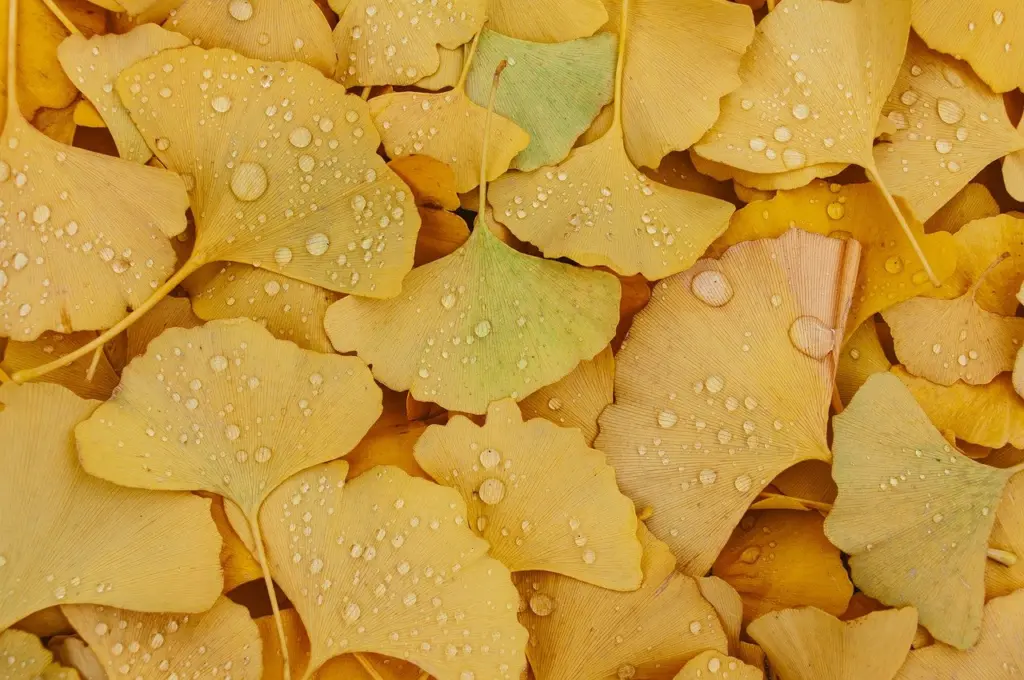
2. Gingko Tree
The Gingko tree stands as a living fossil, with a history stretching back over 270 million years.
Native to China, this ancient tree species has witnessed the ebb and flow of countless civilizations, earning a special place in the hearts of people around the globe. Revered for its longevity and resilience, the Gingko tree is often seen as a symbol of endurance, hope, and peace.
Its unique fan-shaped leaves, which turn a bright yellow in autumn, are not only a sight to behold but also carry deep symbolic meaning in various cultures.
In traditional Chinese culture, the Gingko tree is esteemed for its medicinal properties and as a symbol of unity and duality, embodying the yin and yang. The leaves of the Gingko are unique, with a bifurcated (split) design that resembles a fan. This split can be seen as a physical manifestation of yin and yang.
Plus, its ability to survive and thrive in adverse conditions, including modern urban environments, further amplifies its symbolic representation of resilience against the odds. The tree’s longevity, with some specimens living over a thousand years, speaks to its enduring strength. In fact, the gingko tree was even known to withstand the atomic bomb in Hiroshima, Japan which has further cemented its status as a symbol of hope and rebirth in the face of adversity.

3. Cedar Tree
The Cedar tree, known across various species such as the Cedar of Lebanon (Cedrus libani), the Atlas Cedar (Cedrus atlantica), and the Deodar Cedar (Cedrus deodara), has been revered throughout history for its majestic beauty and durability.
These trees are native to the mountainous regions of the Mediterranean and the Himalayas, but their influence spans much broader, embodying themes of purity, protection, and eternal life.
Cedar trees have long been esteemed for their wood’s incorruptibility, which is resistant to decay and insects, making it a preferred material for building sacred spaces such as temples. This physical characteristic became a metaphor for spiritual purity. In the biblical context, the Cedar of Lebanon is mentioned several times and it was used in the construction of Solomon’s Temple.
In Sumerian and Babylonian cultures, the Cedar was associated with the gods. The Epic of Gilgamesh, one of the oldest known pieces of literature, narrates the hero’s journey to the Cedar Forest, a sacred realm guarded by the gods, to cut down the mighty trees and demonstrate his strength.
The Cedar tree also holds importance in various indigenous traditions, where it is used in cleansing and healing rituals (similar to sage and palo santo). Its aromatic wood is believed to ward off evil spirits and purify the environment.

4. Oak Tree
The Oak tree, with its robust stature and sprawling branches, has been a symbol of strength, endurance, and wisdom across many civilizations throughout history.
In ancient European cultures, the Oak was sacred to the Druids, the priests of the Celtic tribes, who saw it as the king of trees. They believed that Oak trees were hosts to powerful spirits and conducted their religious ceremonies in Oak groves, which were considered gateways to the otherworld. The tree’s connection to the divine was further emphasized by the mistletoe that often grows on its branches, a plant the Druids held in high esteem for its own mystical properties.
The Oak was also significant in Norse mythology, dedicated to Thor, the god of thunder. Its association with Thor stemmed from the Oak’s ability to attract lightning due to its tall stature.
In Greek mythology, the Oak was sacred to Zeus, the king of the gods. Oracles, considered to be the mouthpieces of the gods, often delivered prophecies from beneath Oak trees.
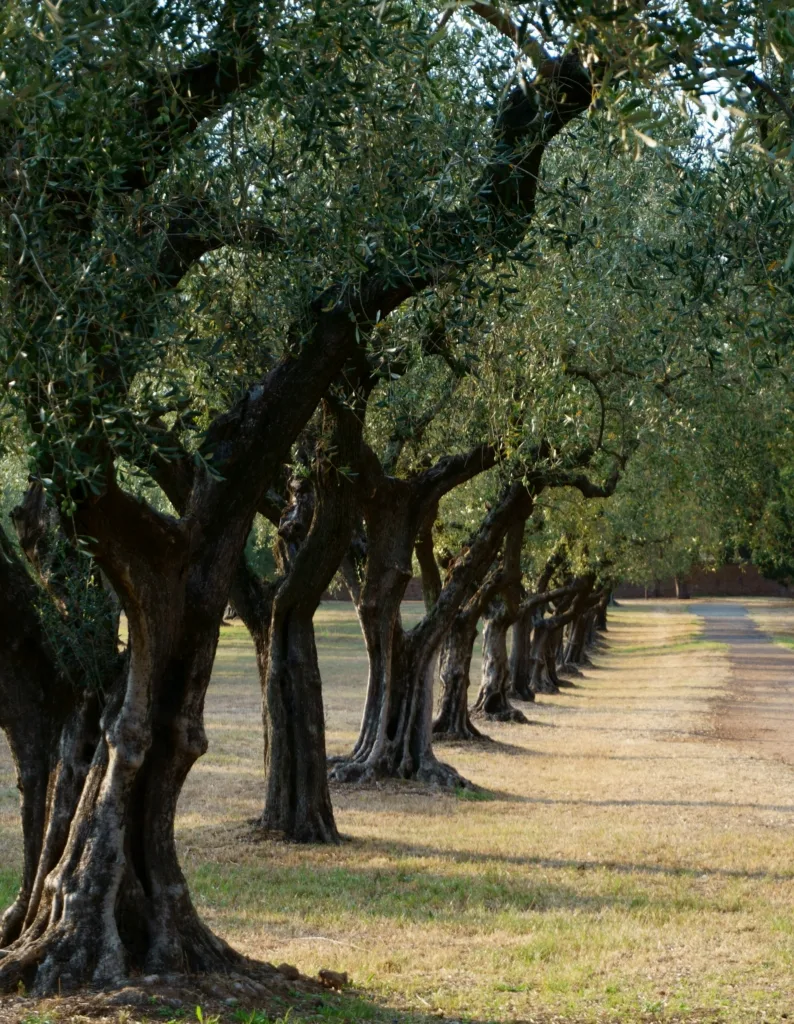
5. Olive Tree
The Olive tree is revered across Mediterranean cultures as a symbol of peace, wisdom, and prosperity. This evergreen is celebrated for its longevity and the precious oil it produces, lighting homes, anointing heads, and nourishing bodies for millennia.
Greek mythology honors the Olive tree as a gift from Athena to the city of Athens, symbolizing wisdom and peace. The Olive branch is also known universally as a symbol of peace and victory.
In the Abrahamic religions, the Olive tree is equally significant. Christianity marks the Mount of Olives as a key site of Jesus’s teachings. The Olive branch that a dove brings to Noah after the Great Flood represents God’s reconciliation with humanity. In Islam, the Olive is cited in the Quran as a blessed tree, illuminating the light of God and guiding enlightenment.
The tradition of Olive cultivation links past generations with the present, with ancient trees dotting landscapes in Greece, Italy, and Spain as living artifacts of human history. Their growth in challenging conditions mirrors the enduring spirit of the cultures that hold them dear.

6. Baobab
The Baobab tree, often called the Tree of Life, is a symbol of strength, resilience, and community in many African cultures.
Native to the African savannahs where the climate is dry and arid, the Baobab has adapted to its environment in extraordinary ways, storing large quantities of water in its trunk to survive the harsh dry season. This remarkable ability, along with its longevity, some living over a thousand years, imbues the Baobab with a sense of permanence and wisdom in the landscapes it dominates.
African folklore is rich with stories of the Baobab. One popular legend explains its unusual appearance, with branches that look like roots, by saying that the Baobab was thrown from the heavens and landed upside down!
The Baobab is central to community life. Its fruit, rich in vitamin C, and seeds, which are ground into flour or pressed for oil. The tree’s bark is used for cloth and rope, and its leaves are consumed as part of local cuisines.

7. Sycamore Fig
The Sycamore Fig, native to the African continent and the Middle East, symbolizes abundance, fertility, and protection. This tree is distinctive for its generous shade, broad, lush foliage, and the unique way its fruit grows directly from the trunk and branches, a phenomenon known as cauliflory.
In ancient Egypt, the Sycamore Fig was considered sacred, associated with the Egyptian goddesses Isis and Hathor, who were thought to provide protection and guidance in the afterlife. The tree was often depicted in tomb paintings, symbolizing eternal life.
The Sycamore Fig also appears in the Bible, most notably in the story of Zacchaeus, who climbed a Sycamore Fig tree to see Jesus as he passed through Jericho.

8. Kapok Trees
The Kapok tree is a towering figure in the rainforests of Central and South America, and it also grows in parts of Africa and Southeast Asia.
Its presence is commanding, with a massive trunk, buttressed roots for stability, and a canopy that rises high above the forest, making it a literal and metaphorical pillar of its ecosystem. This tree has long been enveloped in the lives of the indigenous peoples who live among them, symbolizing the interconnectedness of life and the universe.
Traditionally, the Kapok tree embodies the concept of the world tree or axis mundi in various indigenous cosmologies. It’s believed to connect the three layers of the world: the underworld, the earth, and the heavens. Its towering stature is seen as a physical representation of this spiritual journey, with its roots deeply embedded in the earth and its branches reaching toward the sky.
The tree also provides tangible benefits to both humans and the ecosystem. The fibers from its seed pods, known as kapok, are used for insulation, stuffing for pillows, and life jackets, thanks to their buoyancy and water resistance.
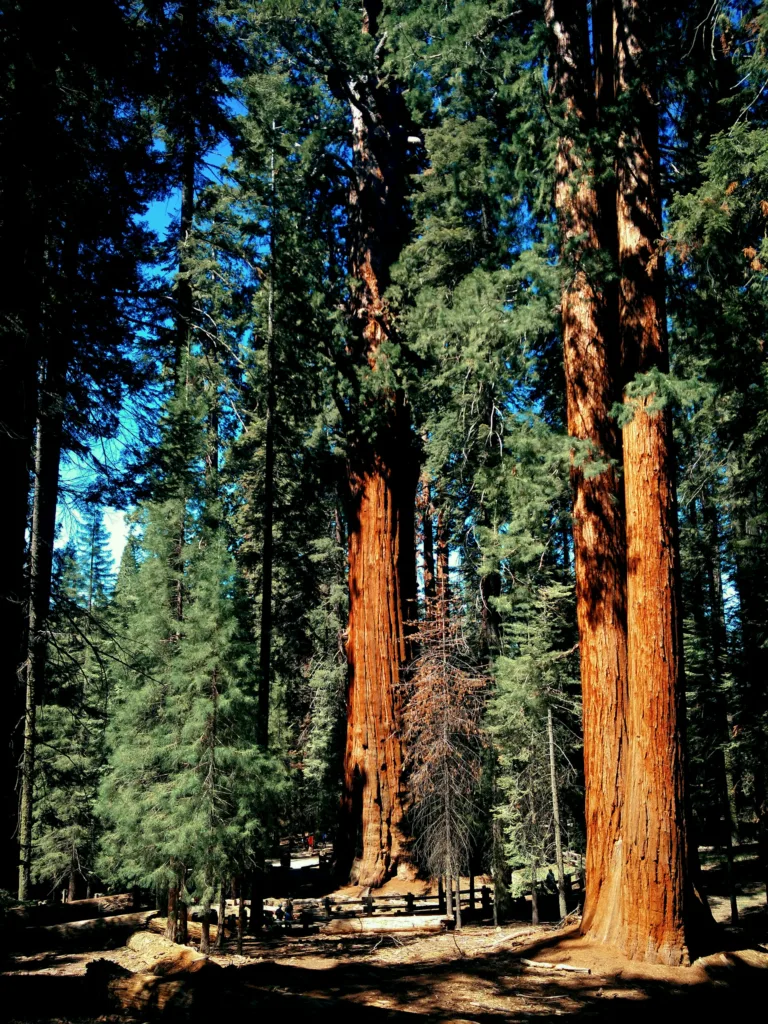
9. Giant Sequoia
The Giant Sequoia is one of the most awe-inspiring trees in the world. Native to the western slopes of the Sierra Nevada mountains in California, these ancient beings are among the largest and oldest living organisms on Earth.
Their massive trunks, which can reach over 9 m (30 ft) in diameter, and their towering heights, often exceeding 90 m (300 ft), evoke a sense of wonder and humility in those who stand among them.
Historically, the Giant Sequoia has been revered by the Native American tribes of the Sierra Nevada region. They recognized the tree’s grandeur, incorporating it into their spiritual practices. With some specimens estimated to be over 3,000 years old, they have come to symbolize endurance, resilience, and the sacredness of nature.
In the broader cultural context, the Giant Sequoia has come to embody the spirit of conservation and the importance of preserving natural wonders for future generations. The establishment of Sequoia National Park in 1890, partly motivated by the desire to protect these magnificent trees, marked one of the earliest efforts in the United States to conserve natural resources.

10. Kauri Tree
The Kauri tree is a majestic species native to New Zealand, holding deep significance for the Maori people. Towering above the forest canopy, the Kauri is known for its massive girth and height, creating an awe-inspiring presence in the landscape. For the Maori, the Kauri is more than just a tree; it is a living ancestor.
In Maori mythology, the Kauri is often associated with Tane Mahuta, the god of forests and birds, who is said to have pushed the heavens and the earth apart to bring light to the world. This act of creation is mirrored in the way the Kauri dominates the forest skyline, its trunk reaching towards the sky.
The Kauri plays a pivotal role in Maori traditions. It is used in the construction of waka (canoes), marae (meeting houses), and taonga (treasured objects), each piece carrying the mana (prestige) of the tree from which it was crafted.
For the Maori, the forest is a whanau (family), with each tree, bird, and insect playing a role in the collective health and wellbeing of the community. The Kauri, as one of the forest’s most significant members, is treated with utmost respect, its health and vitality seen as reflective of the health of the people and the land.
This relationship underscores the holistic worldview of the Maori, where humans are intimately connected with the natural environment, and every element of the ecosystem is considered sacred.

11. Palo Santo
Palo Santo is a sacred tree native to parts of South America, especially in Peru. Its name translates to “holy wood” in Spanish, so you can see just how significant this tree is. Palo Santo has been utilized for centuries in a variety of rituals, healing ceremonies, and traditional medicine, cherished for its distinctive sweet scent when burned and its spiritual cleansing properties.
Incans and other indigeneous cultures believe that Palo Santo carries within it the spirit of the tree, which emerges to aid and protect those who use the wood. It is said that only fallen branches and dead trees that have lain undisturbed for years are harvested for use.
The burning of Palo Santo is said to cleanse negative energies, promote healing, and bring good fortune. Its smoke is often used to purify homes, sacred spaces, and individuals, creating a bridge between the physical and spiritual realms.
Beyond its spiritual applications, Palo Santo’s essential oils are prized for their therapeutic properties, including reducing stress, alleviating pain, and bolstering the immune system.

12. Acacia Tree
The Acacia tree, with its distinctive thorny branches and vibrant yellow blossoms, is deeply embedded in the cultural landscapes of regions spanning Africa, the Middle East, and Australia.
In ancient Egypt, the Acacia was considered the Tree of Life, associated with characteristics of immortality. It was believed that the tree housed the life and death of the soul, making it an integral part of funerary rites. The Acacia’s wood, deemed incorruptible, was used to make coffins and statues, linking it forever with the eternal journey of the soul.
In Judaism and Christianity, it is mentioned in the Bible as the material from which the Ark of the Covenant and the Tabernacle were constructed.
The Acacia tree has also garnered attention for containing DMT (N,N-Dimethyltryptamine) in some species. DMT is a powerful psychoactive compound, known as the Spirit Molecule or God Molecule. It’s most known form is in the Ayahuasca brew. A theory by scholar Benny Shannon posits that Moses might have encountered DMT from an Acacia bush during the biblical burning bush event, suggesting a psychoactive dimension to this divine revelation.

13. Linden Tree
The Linden tree, or Tilia, has long been celebrated in folklore across Europe for its gentle beauty, soothing properties, and the deep sense of peace it fosters. With its heart-shaped leaves and fragrant blossoms, which have been used for centuries in herbal teas and medicines, the Linden symbolizes love, fertility, and the cyclical nature of life.
In many European cultures, the Linden was considered sacred, a tree under which lovers would meet and communities would gather to celebrate and make important decisions.
The tree’s association with justice and law can be traced back to the Germanic and Slavic peoples, who often held court sessions under its branches, believing in the tree’s ability to inspire fairness and truth.
In mythology, the Linden tree is frequently associated with motherhood and the divine feminine, reflecting its nurturing and protective qualities. Its soft wood, easy to carve, has been used to create figures of deities and protective amulets.

14. Banyan Tree
The Banyan tree is a monumental figure in the landscapes of India and other parts of Asia, revered for its immense size and the intricate network of aerial roots that descend from its branches to form new trunks.
In Hindu mythology, the Banyan is considered the tree of immortality, symbolizing eternal life due to its ever-expanding growth pattern and longevity. It is associated with the god Vishnu, one of the principal deities of Hinduism, who is said to reside in its leaves.
The tree also holds a significant place in Buddhism. It is believed that the Buddha, after achieving enlightenment, spent seven days near a Banyan tree, absorbed in contemplation of the intricate web of life it represented.
The gigantic trees reclaiming the temples of Ta Prohm (picture above) in Siem Reap, Cambodia, are some of the most grand if not spiritual trees I have ever seen in my life!

15. Willow Tree
In many traditions, the Willow is associated with the moon, water, and the feminine, linking it to intuition and emotion. This connection is reflected in its frequent depiction as a site of mourning, where its gentle, swaying branches evoke a sense of melancholy yet also offer solace. The tree’s ability to grow new roots from a single fallen branch symbolizes resilience and the possibility of new beginnings, even in the face of loss.
The Willow holds a special place in Celtic mythology, where it was considered a tree of enchantment, connected to the communication between worlds. Druids revered the Willow for its capacity to enhance psychic abilities and to access hidden knowledge, using its branches in divination and ceremonial practices.
In Chinese culture, the Willow is a symbol of flexibility, demonstrating how yielding can overcome the strong (similar to the concept of Tai Chi). It is also believed to ward off evil spirits, with Willow branches used during the Qingming Festival to honor ancestors and protect the living from negative influences.
The healing properties of the Willow further contribute to its sacred status. The bark of the tree contains salicin, a compound similar to aspirin, which has been used for centuries in herbal medicine to relieve pain and fever. This aspect of the Willow as a healer complements its spiritual symbolism, bridging the physical and metaphysical realms.

